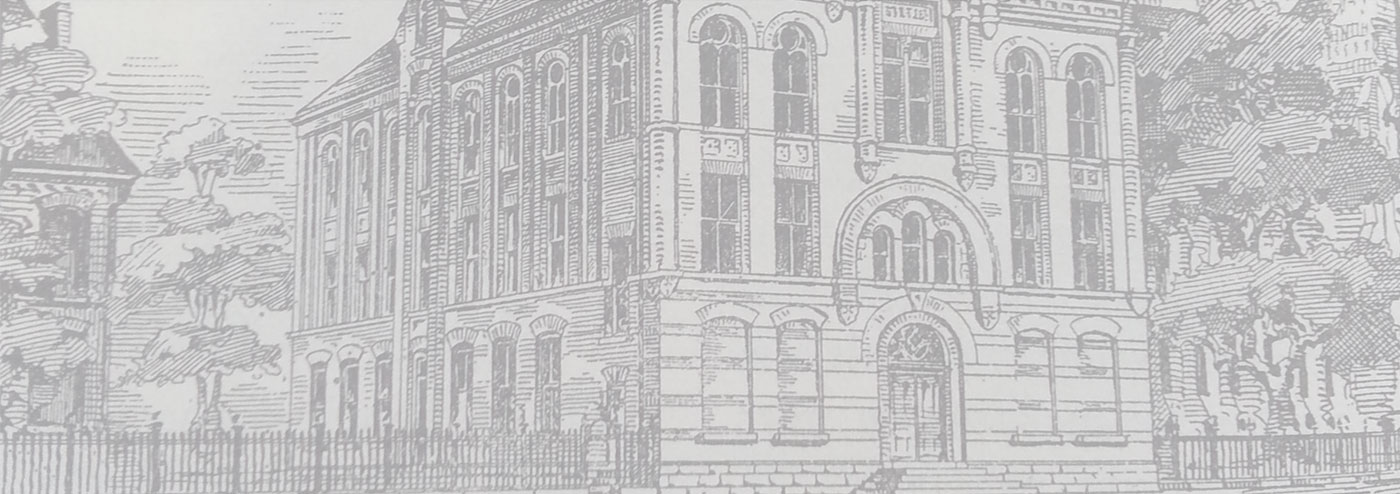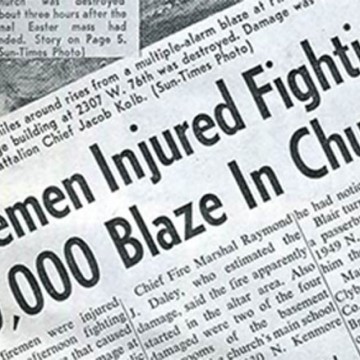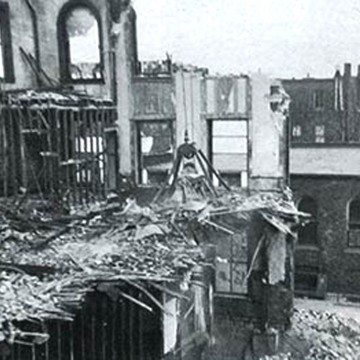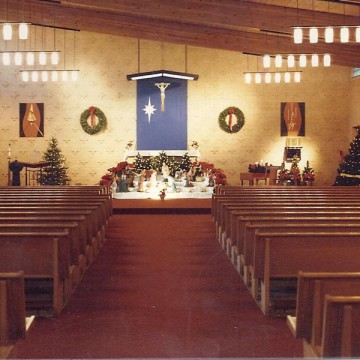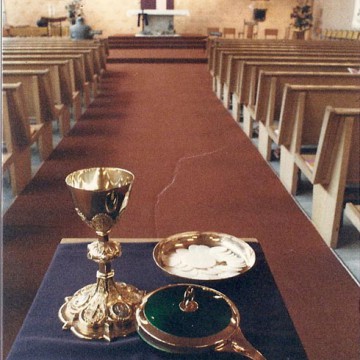Early 1900s to 1950s
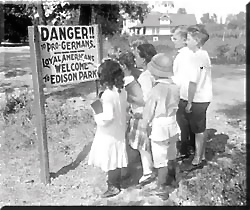
anti-German sign, Chicago
Through hardships of WWI, The Great Depression and WWII, the community of St. Teresa’s endured. The 50th Anniversary of the parish was celebrated in the time of impending war, November 19, 1939.
In the periods of national uncertainty before and during WWI and WWII, German-speaking people, as well as their culture, fell under suspicion. World War I (1914–1918) had a profound impact on Chicago before and after the American war declaration on April 6, 1917. The war inflamed and altered Chicago’s ethnic landscape. The city’s large German and Irish communities tended to sympathize with the Central powers: Germany, Austria-Hungary, Turkey, and Bulgaria, or at least favored American neutrality. Chicago’s Germans, the city’s largest immigrant group, vociferously opposed Washington’s growing sympathy for Great Britain, France, and Russia. Prominent Chicago German Americans, such as meatpacker Oscar Mayer, city plan commission member Charles Wacker, and Chicago Symphony Orchestra director Frederick Stock, as well as the Irish American congressman Fred Britten, were well placed, and vocal, opponents of an American alliance with the Entente Powers.
German-sounding foods were renamed: sauerkraut became “liberty cabbage”; frankfurters became “hot dogs.” Chicago institutions were anglicized as well, with the Germania Club becoming the Lincoln Club, and the Bismarck Hotel the Hotel Randolph. Frederick Stock took a brief leave of absence from the Chicago Symphony Orchestra to apply for naturalization. Zealous to ensure domestic security, private organizations such as the American Protective League monitored Chicago’s Germans and detained draft dodgers in occasional “slacker” drives.
The war shut off immigration and siphoned native-born labor into the war effort. Many Chicago employers turned to women and African Americans, hiring them for jobs previously reserved for white men.
During WWII, some who remained at home bought savings bonds, grew victory gardens, and all endured food rationing. The neighborhood was the building block of home front activities that almost immediately enveloped every family. Chicagoans frequently worked double shifts to aid the war effort. Such production levels created labor shortages that brought the physically disabled, the elderly, and tens of thousands of women, African Americans from the South and Japanese Americans into the workplace.
Many newcomers, Poles, Checks, Serbians, were drawn to St. Teresa’s, enriching the founding community of German immigrants. By 1953 St. Teresa School enrollment grew to 500 students. In 1956, parishioners agreed to close the kindergarten and replace it with a preparatory class for the many foreign-speaking children of the parish.
Richard J. Daley took office as Mayor of Chicago in 1955 and soon put into action the Chicago Plan to expand the downtown and Gold Coast areas. This plan included the destruction of neighborhood in Lincoln Park and other area of the city. “Daley’s administration envisioned renewing the city with a ring of clearance and redevelopment around the downtown. That buffer area would protect existing businesses and new government buildings in the Loop and also spread remedial effects outward into the city’s residential neighborhoods.” (Amanda Seligman, historian, The Third City) Andrew Greeley later wrote in Neighborhood that the true conflict of the time was not racial or cultural but between modernizers and those reliant on dense interpersonal networks, anchoring local institutions, and neighborhood continuity. The St. Teresa’s area was facing an economic shift. People of Chicago and the midwest would face the loss of manufacturing jobs and the rise of service industries, new industries that would be less labor dependent and more dependent on ‘contingent’ labor when needed, and enormous holes were left on the landscape as industry closed or relocated.
Lincoln Park Conservation Association, an umbrella organization for Lincoln Park neighborhood organizations, pursued neighborhood renewal by encouraging private rehabilitation of property and the use of government assistance such as federal Urban Renewal funds and enforcement of the housing code. In 1956 through the 1960’s the Chicago began implementing its “General Neighborhood Renewal Plan.”
A few hours after the last Easter liturgy on March 29, 1959, tragedy struck St. Teresa’s when a fire swept through the church and school. The cause of the fire was never known. The pastor, Rev. Edward J. Niess, retired the following June. The new pastor, Rev. Justin Laibach was welcomed by the community on June 22, 1959 and charged with rebuilding the church and school. Through the recovery and planning process, the school schedule and church services continued in the parish hall. The United States was beginning a time of prosperity, but the neighborhood of St. Teresa’s was still poor and undergoing change.
In the midst of great fund-raising efforts to build a new church, many parishioners of St. Teresa’s joined the Neighborhood Conservation Organization and were active in Ranch Triangle Association, both organizations were attempting to maintain and improve the entire neighborhood through community awareness and mutual cooperation.
On March 4, 1963, parishioners celebrated the opening of their new church building on the corner of Armitage and Kenmore Avenues. Of contemporary architecture, it included an open tower reminiscent of towers in Avila Spain that held two bells from the original church. This was the new home for the family of St. Teresa of Avila parish.


